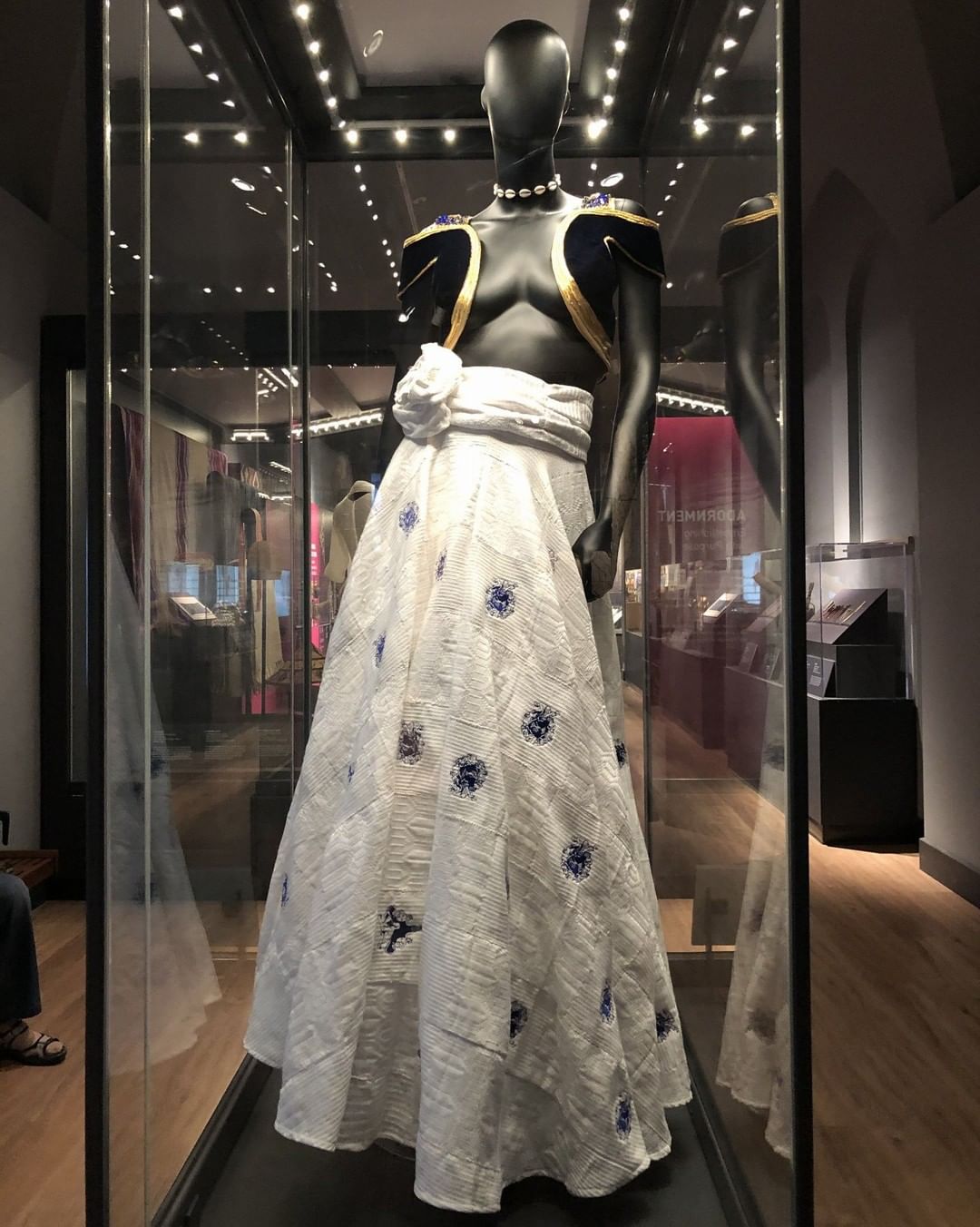
Date uploaded: 2020-03-25 20:57:26
Archive date: Thu, 23 Dec 2021 22:23:23 GMT
This dress stands today in our newly renovated Africa Galleries. Designed by @sayynomoore, a PhD candidate in History at Penn, and @emersontheartist, a Philadelphia-based artist, it drew for inspiration on Moore’s two study abroad trips to Ghana.
The white lapa skirt is made from Kente cloth, associated with royalty, and recalls the blank pages of a storybook. It features four patches depicting elements of the African drum and the Sankofa bird, a fictional animal that represents the retrieval of knowledge from the past through our ancestors. In an interview, Ruffin said, “Our elders are living, breathing books. And in most cases they are eager to open their pages so we can take in their knowledge.”
The top is a deep blue velvet that represents the night sky. Originally, it was meant to have constellations projected onto it to resemble the North Star that Harriet Tubman followed to freedom. The necklace is made of cowry shells, which functioned as currency in pre-colonial West Africa.
When I asked the artists its title, they called it, "Wearable Literature."
Moore said she hopes that anyone who passes by the dress will “stop and take the time to read the information and connect it to the larger importance of … connecting with your ancestors.”
[Thanks to members of @uofpenn's Women Making History: The Penn Museum and the Centennial 2020 class, an objects-based learning course, who did the research for and wrote this Instagram post!]
#VisitFromHome: Object number EP-2019-7-3
#WomensHistoryMonth
